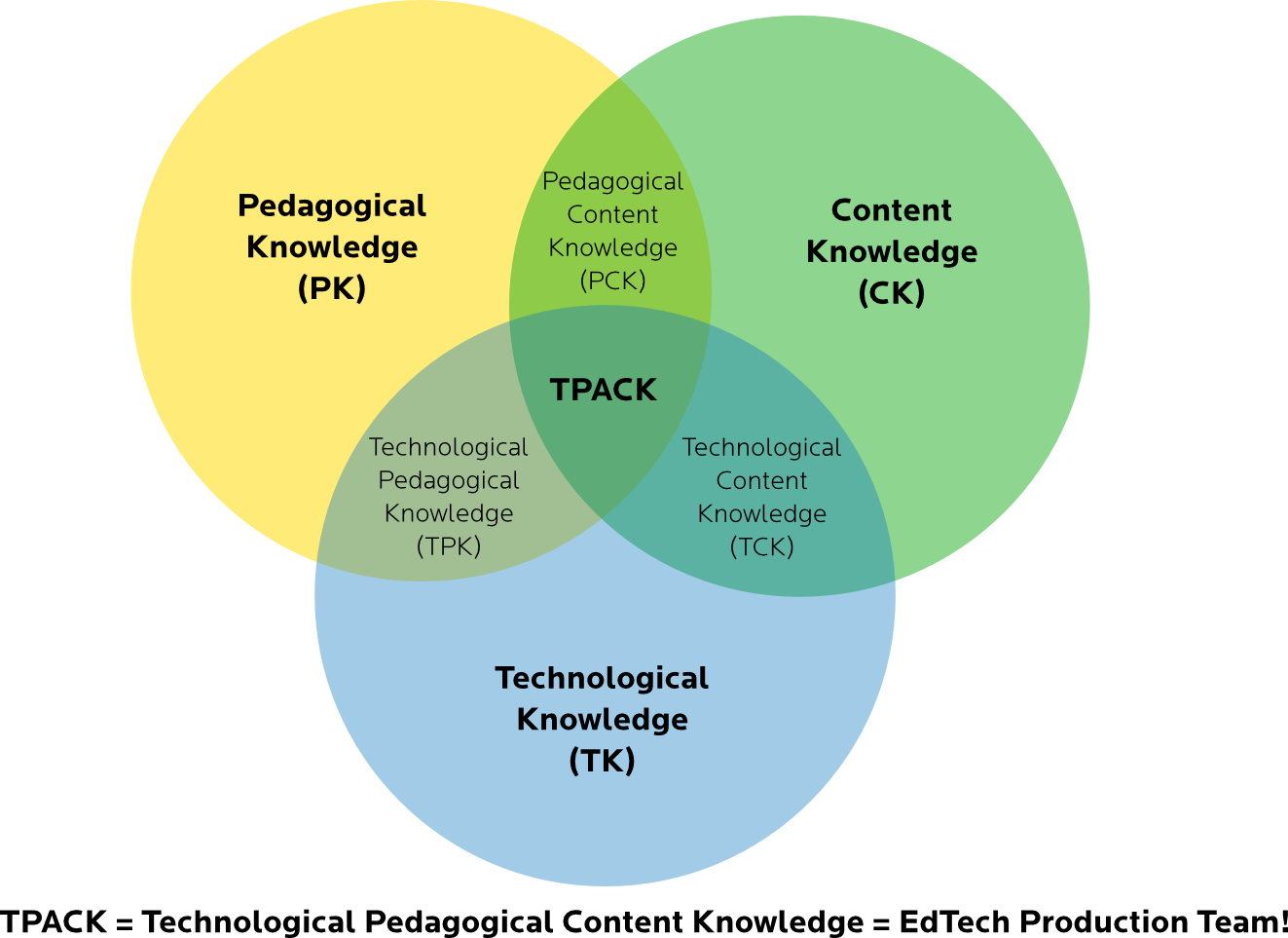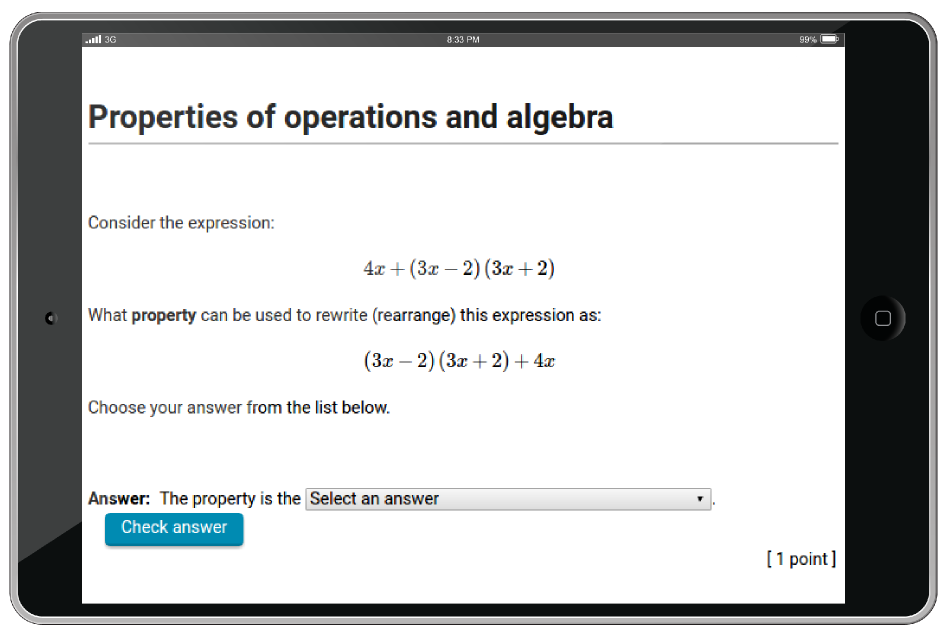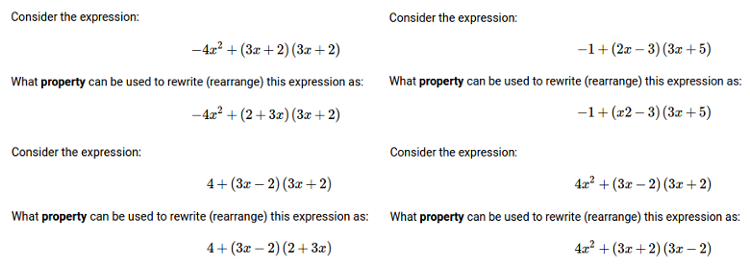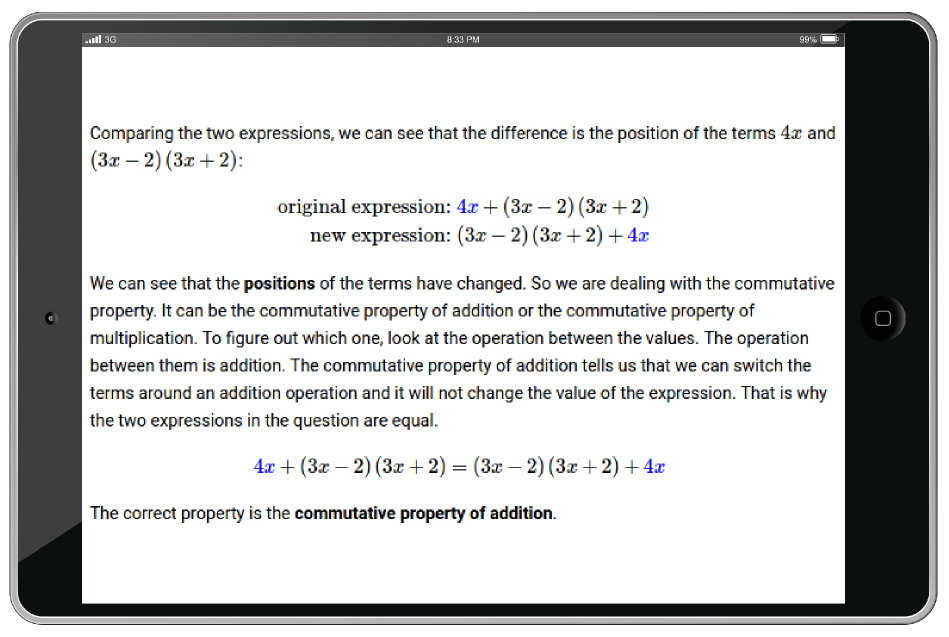March 31, 2016 / by Eric Gulbis /
Properties of a maths question
Our EdTech Production Team plans, produces, scaffolds and codes the question items for Siyavula Practice. At the moment, this growing team consists of 8 people who specialise in one of the subject areas, namely Mathematics, Physics or Chemistry. We require a solid background in the content specialisation and several of our team have a Masters or PhD in the field. Importantly, we then also look at teaching experience, or an ability to logically unpack and explain concepts, so that we have a strong pedagogical foundation for each subject area. Lastly, due to the nature of how we create questions for Siyavula Practice, explained further below, we also require our EdTech Production Team to have the necessary technical skills to code and implement the questions.
The concept of pedagogical content knowledge (PCK) is well known in the teaching profession. Furthermore, we now have a framework to understand and describe the kinds of knowledge needed for effective pedagogical practice in technology-enhanced learning environments, called Technological Pedagogical Content Knowledge (TPACK). The image below is adapted from the website www.tpack.org where you can find out more about the framework and the research.

As we are creating a service to enable effective learning and teaching experiences using technology, the TPACK framework summarises how we approach our work and the skills and competencies of our team. It’s a rather challenging task to find individuals that tick all 3 of these boxes, which is why we also make sure each new team member has a strong desire for lifelong learning and we constantly share, reflect and grow.
In this post, Eric Gulbis, our Mathematics lead, describes their process and the properties of a maths question.
New questions cover key algebra skills
A new group of algebra questions has just been added to Siyavula Practice on our website for Chapter 8 in Grade 9. This group covers an important set of knowledge and skills in algebra: simplifying expressions which include a product of two binomials. And it spans substantial complexity. For example, the questions include these types of expressions:
- Introductory level: \(-3x(x - 3)(x + 5)\)
- Intermediate level: \((2x - 3)^2 - 2x^2\)
- The most horrific: \(-x(x^2 - 3)(x^{2} + 3) + (2x - 7)(3x - 2)\)
Integrating content
Included in this section, just past the intermediate point in skills development, is a question which incorporates older, and highly conceptual content into the standard content. Here is an example:

This question integrates the Chapter 8 content with content about properties introduced earlier in the year. Mixing concepts together like this is often overlooked in standard questions. There are plenty of such standard questions in the new items. But we always aim to build in questions which span a wider space, too. The algebraic properties - commutativity, associativity, and the distributive property - are covered in chapter 1 (of Grade 9) in the context of integer operations. Here, 7 chapters later, we have a chance to revisit the properties in an algebraic context. Stay tuned for the answer to the question above: it is at the end of the article!
The question is many questions
This question focuses on the algebra of how a particular expression changes. The computer code which generates this question creates expressions which change in numerous ways, challenging learners to separate out what has changed and then identify the property at work. Here are four different applications of commutativity all generated by this question:

These variations in the expression are created by a computer program. In this case, that program was written by Saymore Chifamba, a member of the Maths team. He clearly had to find a way to create and keep track of these varied structures, and the answers which go with them.
This is why we call them generative question items, and the way we create these questions makes them an incredibly powerful service for delivering an adaptive, practice for mastery learning experience. You can find out more about the technology behind how we create these questions in this video.
Solutions track the question
If you are familiar with Siyavula Practice, you already know that the solutions track the questions: if the question changes, the solution changes to match it. Just as with the creation of the question, that happens in the computer program. In this particular question, we have used colour to highlight the key parts of the expression which has changed in the question to help students spot what matters and link it to the various properties.
Here are excerpts from the solutions for the first (upper left) and fourth (bottom right) examples above. Notice the differences, even while they are quite similar at first glance.


Solution to the first example
We promised above that we would provide the answer to the first example. The correct answer is: the commutative property of addition. Not convinced? Here is the solution to the question on Siyavula Practice.

Check it out!
This is one of the 9 new questions on simplification of algebraic expressions. You can find them by going to the Grade 9 table of contents on Siyavula’s Siyavula Practice website, clicking on the “+” next to the 8th chapter, “Algebraic expressions”, and selecting “Simplifying expressions” from the list which appears.

